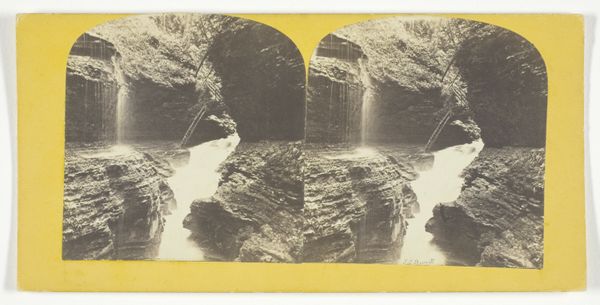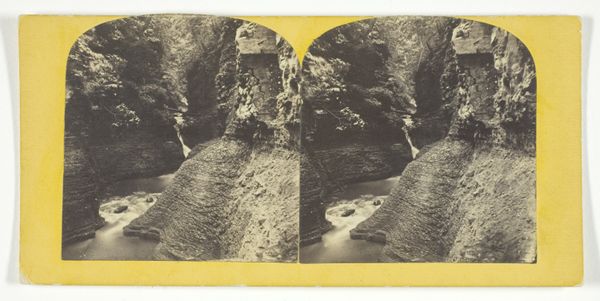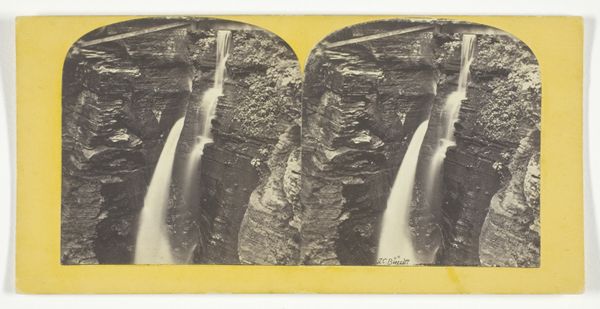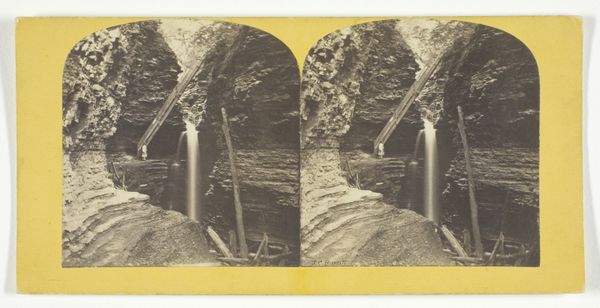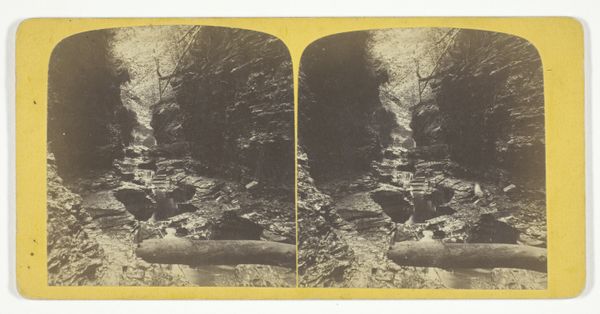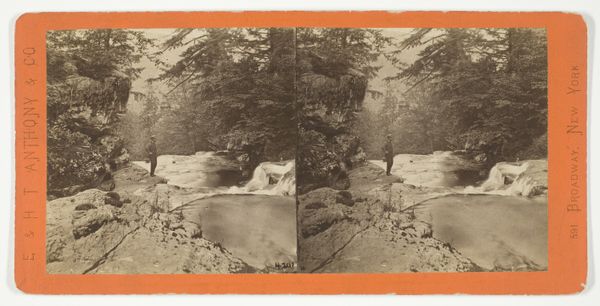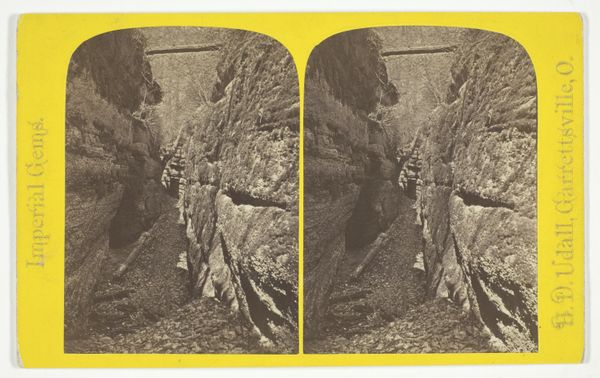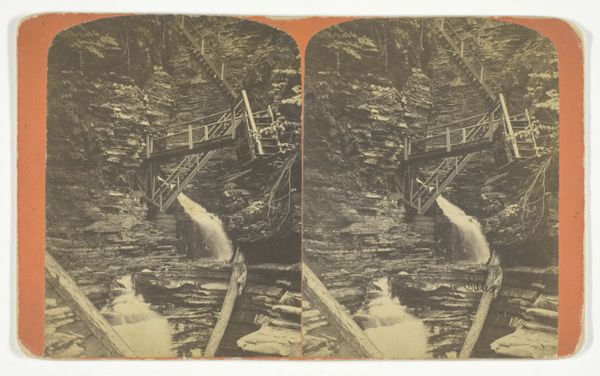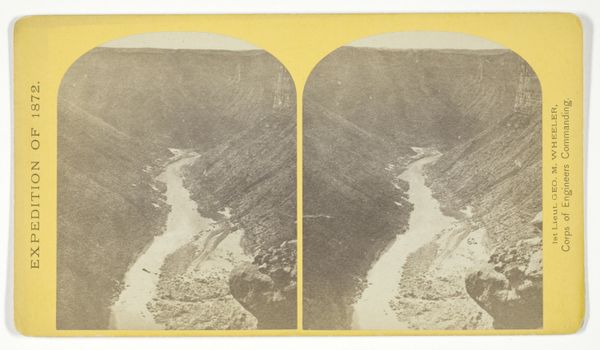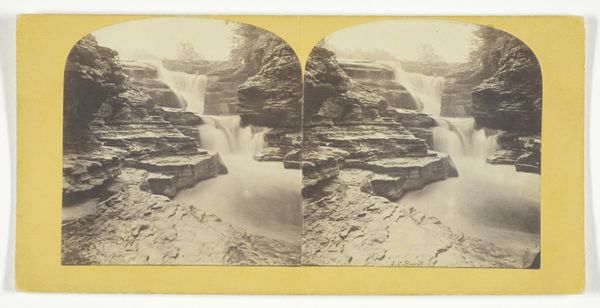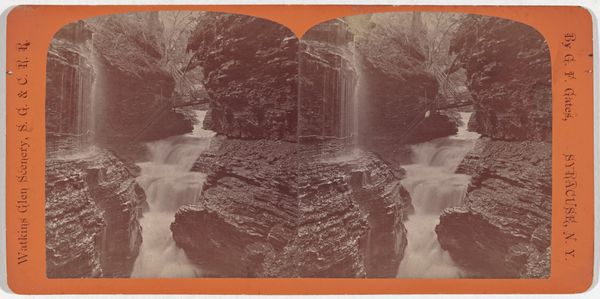
Dimensions: 7.5 × 7.2 cm (each image); 8.4 × 17.1 cm (card)
Copyright: Public Domain
Curator: So here we have "Freer Glen at Watkins Central View 10 - Glen," a gelatin-silver print from sometime between 1860 and 1865, created by J.C. Burritt. It’s part of the Art Institute of Chicago’s collection. Editor: It feels incredibly intimate. Like I've stumbled upon a secret, hidden world, just me and the waterfall. It has this hushed, almost sacred quality. Curator: Absolutely. The mid-19th century was a period deeply invested in notions of the sublime in nature and burgeoning tourism. Photography was emerging as a tool to capture and disseminate those ideas. The intersection with Manifest Destiny cannot be overlooked. Who had the right to "discover" and claim such spaces? And for whom? Editor: You're right, I do find myself thinking about accessibility here – there’s this rickety-looking staircase clinging to the rocks. It speaks volumes about humankind’s urge to conquer, yet nature's raw beauty always reigns supreme. I find the staircase gives an indication of just how grand the glen must be. I find my self looking between each picture, almost waiting to see it spring to life. Curator: Exactly. Think about the pictorialist style it also embodies. While seemingly objective, the gelatin-silver process allowed for manipulation and interpretation, furthering specific aesthetic goals. The contrasts are gorgeous. The soft waterfall really creates a contrast against the hard looking stone face that surrounds it. Editor: There's such a tactile element; I can almost feel the cool mist on my face, hear the water cascading over the rocks. This artist isn't merely showing us a landscape, they're giving us an experience – it’s truly like being in that space and time. Curator: These landscape photos really offered city dwellers the chance to connect, in a very mediated way, to the supposedly pure spaces of nature as America rapidly industrialized. As preservation became a hot-button issue in intellectual and political circles. This image allows to connect directly to that dialogue about environment. Editor: It definitely does, and thinking about this being the first type of landscape photography that the masses got to experience. Wow... Thanks for opening my eyes, what seemed a serene picture to me, you opened a discussion around a larger conversation about man's involvement. Curator: The politics are there to be unpacked, every single time. It really prompts you to reconsider everything we think we know about a supposedly simpler past.
Comments
No comments
Be the first to comment and join the conversation on the ultimate creative platform.

